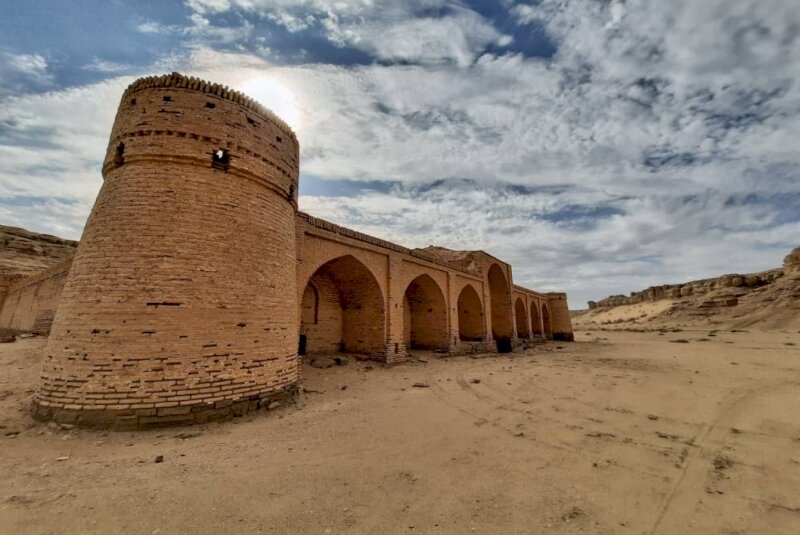Qajar-era caravanserai in eastern Iran undergoes restoration

TEHRAN - The first phase of a restoration project on Chehel Payeh Caravanserai in Tabas, eastern South Khorasan province has been completed, the deputy provincial tourism chief has said.
The project involves landscaping, repairing rooms and rooftops as well as strengthening the whole structure that dates from the Qajar-era (1789-1925), Ali Shariatimanesh said on Wednesday.
A budget of one billion rials ($23,800 at the official exchange rate of 42,000 rials per dollar) has been allocated to the project, he explained.
The historical inn, which is one of the candidates for collective UNESCO tag has four towers, a courtyard, stable, cistern, and a pool, the official added.
Caravansary (also Caravanserai or Caravansaray) is a building that served as the inn of the Orient, providing accommodation for commercial, pilgrim, postal, and especially official travelers.
According to Encyclopedia Iranica, from the number of surviving caravansaries and their sizes, it is clear that in Safavid and Qajar times there was a state architectural department that was specifically concerned with the construction of caravansaries and stations on the overland routes. Furthermore, in the cities, several caravansaries were erected as lodging houses, depots, and commercial offices in the vicinity of the bazaars.
A typical caravansary consists of a square or rectangular plan centered around a courtyard with only one entrance and arrangements for defense if necessary. Whether fortified or not, it at least provided security against beasts of prey and attacks by brigands.
Iranian caravanserais being ready for collective UNESCO tag
An all-inclusive dossier of a select of Iranian caravanserais is being prepared to be evaluated during the next session of the World Heritage Committee, which will be held in 2022.
Last year, the tourism ministry announced that Iran is developing a dossier for a selection of its historical caravanserais for a possible inscription on the UNESCO World Heritage list. In this regard, cultural heritage experts are assessing such monuments that are scattered across the country to make a shortlist in terms of their architecture, historical and cultural values.
Iran’s earliest caravanserais were built during the Achaemenid era (550 -330 BC). Centuries later, when Shah Abbas I assumed power from 1588 – to 1629, he ordered the construction of network caravanserais across the country. For many travelers to Iran, staying in or even visiting a centuries-old caravanserai, can be a wide experience; they have an opportunity to feel the past, a time travel back into a forgotten age!
ABU/AFM
Leave a Comment